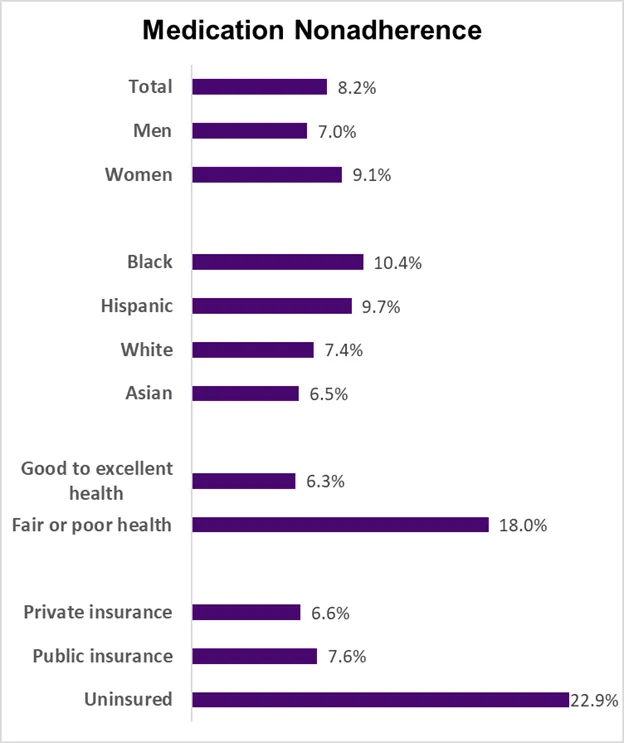One in twelve on medications didn’t take them as prescribed due to cost
February 6, 2024
This is a repost from June, 2023 - a topic that continues to be important
Source: Centers for Disease Control and Prevention June, 2023 LINK
The Centers for Disease Control and Prevention (CDC) published data last year showing that 8.2% of adults under 65 who were prescribed a medication in 2021 reported that they either did not take the medication, took lower doses than recommended, or delayed filling a prescription due to concern about cost. This data is from the National Health Interview Survey, a high quality representative national survey of almost 30,000 adults. About 60% of adults who were surveyed were prescribed at least one medication during the calendar year. While nonadherence was highest (22.9%) in those who were uninsured, it was 6.5% in those who reported that they were privately insured. It was 3.9% (1 in 25) for individuals with a household income greater than 400% of the federal poverty level, about $120,000 for a family of 4.
Most research studies which count pills suggest that non-adherence is substantially higher.
Patients often don’t take medications as prescribed for a variety of reasons which have nothing to do with cost, including side effects and lack of understanding. Cost as a reason for nonadherence can be addressed in plan design.
Implications for employers:
- Employers should consider affordability as they design their benefits.
- Employers can put medications for some chronic diseases, like diabetes, on a preventive medicine list to bypass deductibles and/or provide without cost sharing.
- Plan members who are concerned about drug cost can sometimes make prescriptions affordable by switching to a generic or using discounts or drug copay assistance
Thanks for reading. You can find previous posts in the Employer Coverage archive
Please subscribe, “like,” and suggest this newsletter to friends and colleagues. Thanks!

